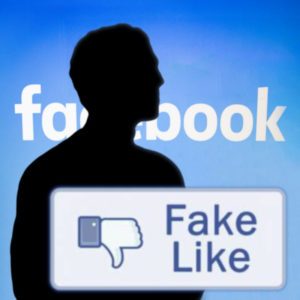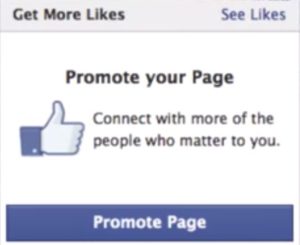
It is well known that Facebook’s advertising model has questionable effectiveness. There is substantial evidence to support the statement that Facebook’s revenue is based on fake Likes.
The effectiveness of Facebook as an advertising platform first came into question in 2012 when savvy users started realising that users accounting for 80% of Facebook likes for a page only had 1% of user engagement.
This disconnect in Likes and engagement led to tests conducted by users to understand what was going on with Facebook Likes.
There are two ways to purchase Facebook Likes. The illegitimate way, and the legitimate way that Facebook sells you.
The illegitimate way is to go to a 3rd party website and purchase Likes.
 Facebook does not want businesses purchasing “Fake Likes” from 3rd parties, but Facebook themselves are more than willing to sell you as many “Fake Likes” as you are willing to purchase.
Facebook does not want businesses purchasing “Fake Likes” from 3rd parties, but Facebook themselves are more than willing to sell you as many “Fake Likes” as you are willing to purchase.
This is what Facebook feels is the legitimate way. They call these other websites “scams” for selling Likes for your Facebook Page because these users will not have a genuine interest in what your Page is about.
But the Likes generated from Facebook’s own advertising programs to advertise your page also result in a massive number of Fake Likes and poor engagement.
The US State Department famously paid $630,000 to acquire 2 Million fans, then realized engagement was 2%.
There are a few well known examples of journalists documenting their own experience with this. I am capturing them here for reference in the future.
The case of Virtual Bagel Ltd.
Virtual Bagel Ltd had over 4,000 likes on Facebook. They had a brilliant business model: “We send you bagels via the Internet – just download and enjoy.”
This was a fake Facebook page set up bu BBC Technology Correspondent Rory Cellan-Jones in 2012. He wanted to find out how much a “Like” was worth on a Facebook page.
After creating the fake page, Cellan-Jones created a Facebook advertising campaign. He set a budget of $10 and launched it. Within minutes people were starting to “like” his meaningless Facebook page. Within 24 hours the fake page had 1,600 likes – and he had spent his $10 budget.
Ultimately, the Virtual Bagel page gathered over 4,000 Likes.
Cellan-Jones analyzed where the “likes” where coming from, and looked at what other pages some of these Facebook accounts had liked. It was obvious that face Facebook accounts associated with Click Farms were liking the page, which resulted in zero engagement.
But he had not hired a Click Farm. He paid for Facebook Ads.
In August of that year Facebook announced it had identified and removed over 83 Million fake accounts, but they did not delete the fake Likes.
The article is here: https://www.bbc.com/news/technology-18819338
The case of Virtual Cat
Popular YouTube channel Veritasium launched the fake Facebook page Virtual Cat in February 2014 to test Facebook’s advertising to determine if it still generated fake Likes.
The page had the following description: “Virtual Cat is a virtual pet like none other. Here we’ll post only the worst, most annoying drivel you can imagine. Only an idiot would like this page.”
The Page had one post saying the following: “PLEASE HELP This page is actually an experiment created by Veritasium, a science YouTube channel. If you can see this post please comment briefly and let me know why you liked this page(because this page is intentionally blank and meaningless). The experiment is to find out who would like a page like this and why. Thank you!”
The creator of the page then paid $10 to advertise it on Facebook. He targed the advertisement only to cat lovers in the United States, Canada, Australia, and the United Kingdom. This was done to avoid the countries where click farms commonly operate.
Within 20 minutes the entire marketing budget was spent, and the page had 39 likes.
Upon analysis of the users that had liked the page, they all liked thousands of other pages.
After spending $25 on Facebook Advertising the Virtual Cat page had 262 Page Likes. 8 People saw the post. 0 People engaged.
The video is here: https://www.youtube.com/watch?v=oVfHeWTKjag
The key learning from these examples is that Click Farms click the Facebook advertisements for free in order to avoid detection by Facebook’s fraud algorithms. Facebook benefits financially from this and isn’t motivated to resolve it.
The article Likes or lies? How perfectly honest businesses can be overrun by Facebook spammers by Jaron Schneider is an excellent article that provides more information on this topic.
https://thenextweb.com/facebook/2014/01/23/likes-lies-perfectly-honest-businesses-can-overrun-facebook-spammers/
Popular Click Farm Locations
Click Farms are typically found in developing countries like India, The Phillapines, Nepal, Shri Lanka, Egypt, Indonesia, Bangladesh where employees are paid $1 for 1,000 clicks of the Facebook “Like” button.





 The software industry has been defined by major shifts or transitions in the technical landscape. Having been in the tech industry for over 25 years, I have been involved with many of these waves. The PC wave, which was followed by the Client Server wave that revolutionized Enterprise Computing. This was followed by the Open Source wave, followed by the rapid rise(and brief collapse) of the Internet wave, Social Networks, and Mobile Computing.
The software industry has been defined by major shifts or transitions in the technical landscape. Having been in the tech industry for over 25 years, I have been involved with many of these waves. The PC wave, which was followed by the Client Server wave that revolutionized Enterprise Computing. This was followed by the Open Source wave, followed by the rapid rise(and brief collapse) of the Internet wave, Social Networks, and Mobile Computing.
 Facebook does not want businesses purchasing “Fake Likes” from 3rd parties, but Facebook themselves are more than willing to sell you as many “Fake Likes” as you are willing to purchase.
Facebook does not want businesses purchasing “Fake Likes” from 3rd parties, but Facebook themselves are more than willing to sell you as many “Fake Likes” as you are willing to purchase.
Recent Comments